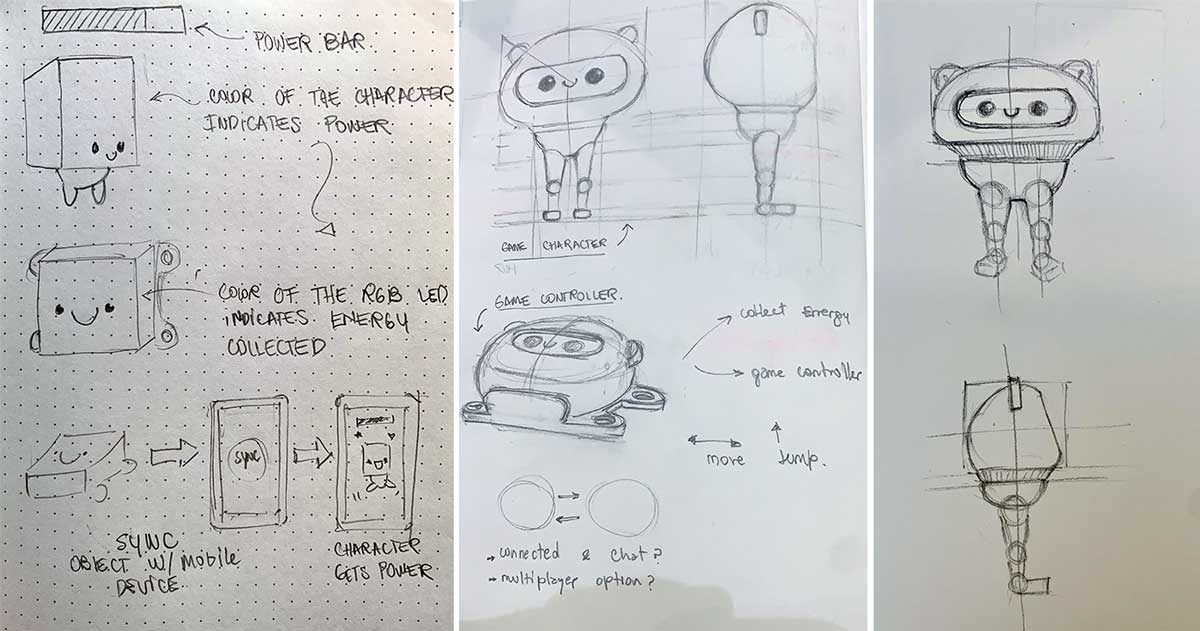Concept Evolution¶
This section is a work in progress. Please refer to Week 02 and Week 03 for additional details.
Overview¶
My project involves creating a device that tracks activity and interacts with a 2D game. The project is divided into three main phases:
- Activity Tracking: Use an accelerometer to track movement.
- Sync Activity: Sync the data to another device, turning it into ‘life’ for a character.
- Play Game: Stream gyroscope data to use the device as a game controller for character movement.
A nice-to-have feature is implementing multiplayer gameplay and interaction between devices, though this may not be feasible within the current scope.

Concept¶
In a world dominated by mobile games, consoles, and computer games, many children are becoming less active. How can we encourage physical movement without discarding technology? How can we use technology to foster connections between children?
While my solution is limited by my current skills and background, my goal is to develop a Minimum Viable Product (MVP). Many studies discuss active gaming, but as I’m not an expert in gaming or child development, I aim to use this project as a proof of concept to test and iterate.
- Active Gaming as a Mechanism to Promote Physical Activity and Fundamental Movement Skill in Children
- Active Gaming: The Future of Play?
The Idea¶
The concept is to develop a tangible interface that tracks steps, uses that data to energize a character in a virtual game, and then serves as a game controller.
Step 1: Device Attachment¶
The device is attached to the shoe using the shoelaces for versatility. It includes a rail with neodymium magnets for easy attachment and removal.

Step 2: Activity Tracking¶
Once attached, the device is turned on for a walk. It calculates the energy needed to fully charge the character’s life. The OLED screen provides feedback: a happy face when moving and a sad face when stationary.

Step 3: Syncing with the Game¶
After sufficient energy is collected, the device syncs with the game via Bluetooth. The syncing process charges the character’s life, which is controlled by the game software (desktop or mobile, yet to be decided).

Step 4: Gameplay¶
The device also features a gyroscope to control the game character. Initially, I considered using Blender with Unity 3D, but for this project, I opted for a 2D game like Space Invaders or Bitter Sam.

Research¶
My research focuses on products and interaction types. I aim to explore how unconventional devices can facilitate natural gestures. While ambitious, I’m focused on ensuring the device connects to the game and effectively controls the character.
Sketching and 3D Modeling¶
Here are some preliminary designs and character evolution:
3D Character Modeled in Blender¶

I followed a topology guide to improve my character modeling for better animation quality.
3D Initial Prototype Modeled in Rhino¶

